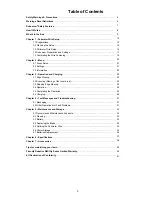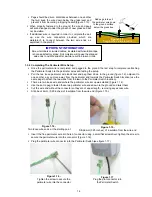
10
Wires leading from the perimeter
to the Perimeter Switch are
adjacent and touching.
Indoor Power
Supply
Zone A
The Perimeter Switch MUST be
mounted
vertically
in order
to maintain its’ water resistance
Wires leading from the perimeter
to the Perimeter Switch are
adjacent and touching.
Indoor Power
Supply
Zone A
The Perimeter Switch MUST be
mounted
vertically
in order
to maintain its’ water resistance
Chapter 1 - Perimeter Wire Setup
1.1 Preparations
Read carefully the Operating and Safety Manual prior to setup.
It is recommended to mow your lawn using a conventional lawn mower and water the ground before
starting the setup for easier driving of the pegs.
Confirm all parts for the setup are included (refer to ‘What’s in the Box’ page 9).
During the setup you will also need the following tools:
1.2 Planning the Setup
1.2.1
Perimeter Switch Location
Find a convenient spot
outside the perimeter
, but a location that is relatively easy for you to
access.
The Perimeter Switch must be
mounted vertically
in order to maintain its’ water resistance and
preferably in a
dry and sheltered location
.
Close to a wall socket
(230V/120V) – as it is connected to an indoor Power Supply.
1.2.2
Placing the Perimeter Switch
The Perimeter Switch connector is designed for quick and easy
disconnection that allows you to easily move the perimeter switch
between plots.
The Perimeter Switch also comes with a large stake that
fastens to its back, making transfer from one plot to
another easier by allowing you to disconnect the switch
and move it with the stake still attached (Figure 1.3).
Hammer
Combination
Pliers
Small flat and
Philips screwdrivers
Figure 1.1
– Tools required for the setup
IMORTANT INFORMATION!
Before starting the setup, it is necessary to first
read this chapter in order to be aware of all setup rules and instructions so you are able
to determine the best location for the Perimeter Switch and the perimeter wire layout.
Figure 1.2
Perimeter Switch
Location
Figure 1.3
- Perimeter
Switch with stake attached











































